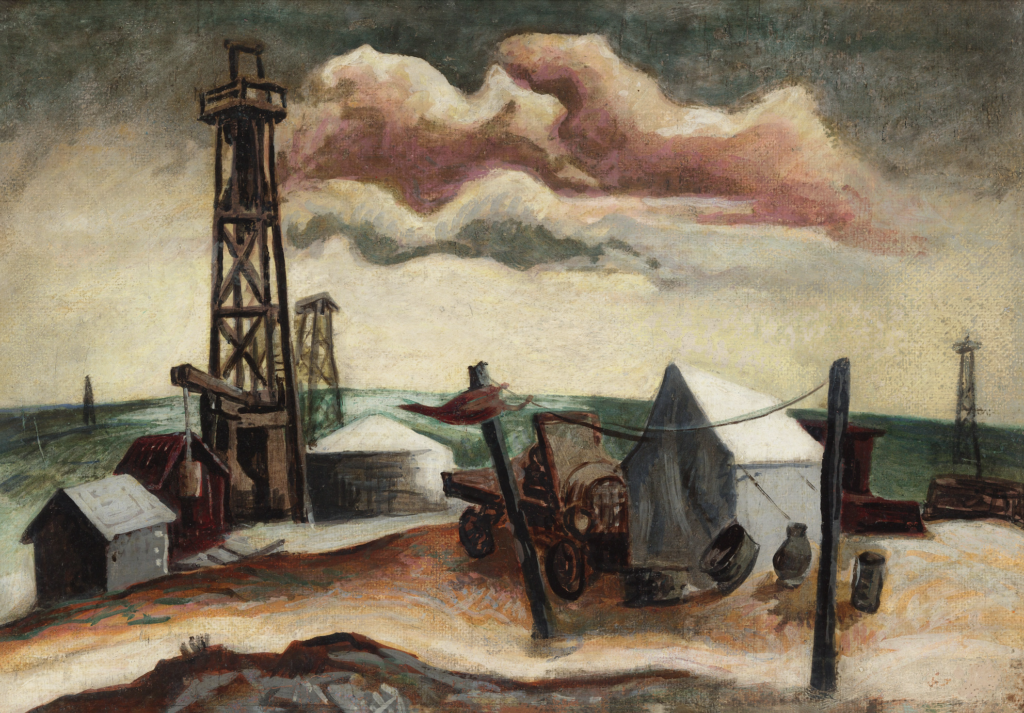In 1905 Florence Thornton Butt used a sixty-dollar loan to open a supermarket—Mrs. C. Butt’s Staple and Fancy Grocery in Kerrville, Texas. Her son, Howard, would deliver products from the tiny store by wagon. And, over the years, that humble little endeavor would grow into one of the most successful grocery chains in Texas. Howard would take over the company, and later hand it over to his son Charles.
Today Charles Butt remains the head of the grocery chain (now known as H-E-B), but he is also a passionate art collector focusing on American modernism. That love of art is deeply intertwined with Butt’s Texas upbringing and his family’s humble roots. Much of this collection, on display from September 7 in American Modernism at the Amon Carter Museum of American Art, features scenes of the country’s working class—from farmers to lobstermen.
Scenes of the sea are also plentiful (Butt was raised near Corpus Christi Bay). Collectively, these works do not idealize the lives of America’s labor class but instead pay an almost photojournalistic homage to the everyday.

In Guy Pène du Bois’s Third Avenue El, a woman and man sit quietly on the IRT subway. She is reading a book. He is peering out the window at the goings-on in a nearby apartment building. All the figures are neatly compartmentalized: one person per train seat (or per window frame). It’s a tidy and ordered snapshot of middle-class monotony. And, although this neatness is certainly contrived, it also gives significance to the activities of the people in the scene—everyone has their place in the fabric of this workaday world.
Charles Butt has long avoided the spotlight, so it’s tempting to imagine the ways in which his art might speak for him. The collection reflects a humbleness and admiration for hard work, but also an awareness of the sacrifices that come along with it. Perhaps the most outwardly evocative example of this ethos is Jackson Pollock’s Camp with Oil Rig, an almost surreal scene in which environment and architecture blur. A rust-colored truck sits under a rig. Both are cast beneath giant, windswept-looking clouds.
A storm is coming. Not a person is in sight—they’re all hunkered down inside the camp. Like many of the pieces in Butt’s collection, it reflects a moment of pause, and perhaps of quiet—but not of tranquility.
The same sensation—quiet consternation—is palpable in many of the more abstract works in Butt’s collection. A painting from John Marin’s Weehawken Sequence mashes the Hudson River into the towering manmade structures around and within it—making for a dreary, gray city soup. Likewise, Ralston Crawford’s Bora Bora II has little to do with the island’s romantic reputation, instead showcasing an uneasy horizon intercepted by harsh lines (boat rigging?).
Crawford was known for his geometric reductions of industrial monoliths—bridges, light posts, factories, and often, the boats he traveled on. Many people collect art to escape. Through idyllic landscapes or poetic portraiture, they sink into the plush comfort of a far-off place. But Butt’s collection feels different. It feels lived-in, honest, and truthful—like a story told to you by your grandparents. It’s a privilege to be seeing this complex, yet poignantly curated, history of American modernism together for the first time. And, the Amon Carter plans to make the most of this opportunity.
Once the exhibition wraps in January 2026, it will go on the road to other institutions throughout Texas.
-Sarah Stafford Turner
American Modernism from the Charles Butt Collection • Amon Carter Museum of American Art, Fort Worth, Texas • September 7 to January 25, 2026 • cartermuseum.org

